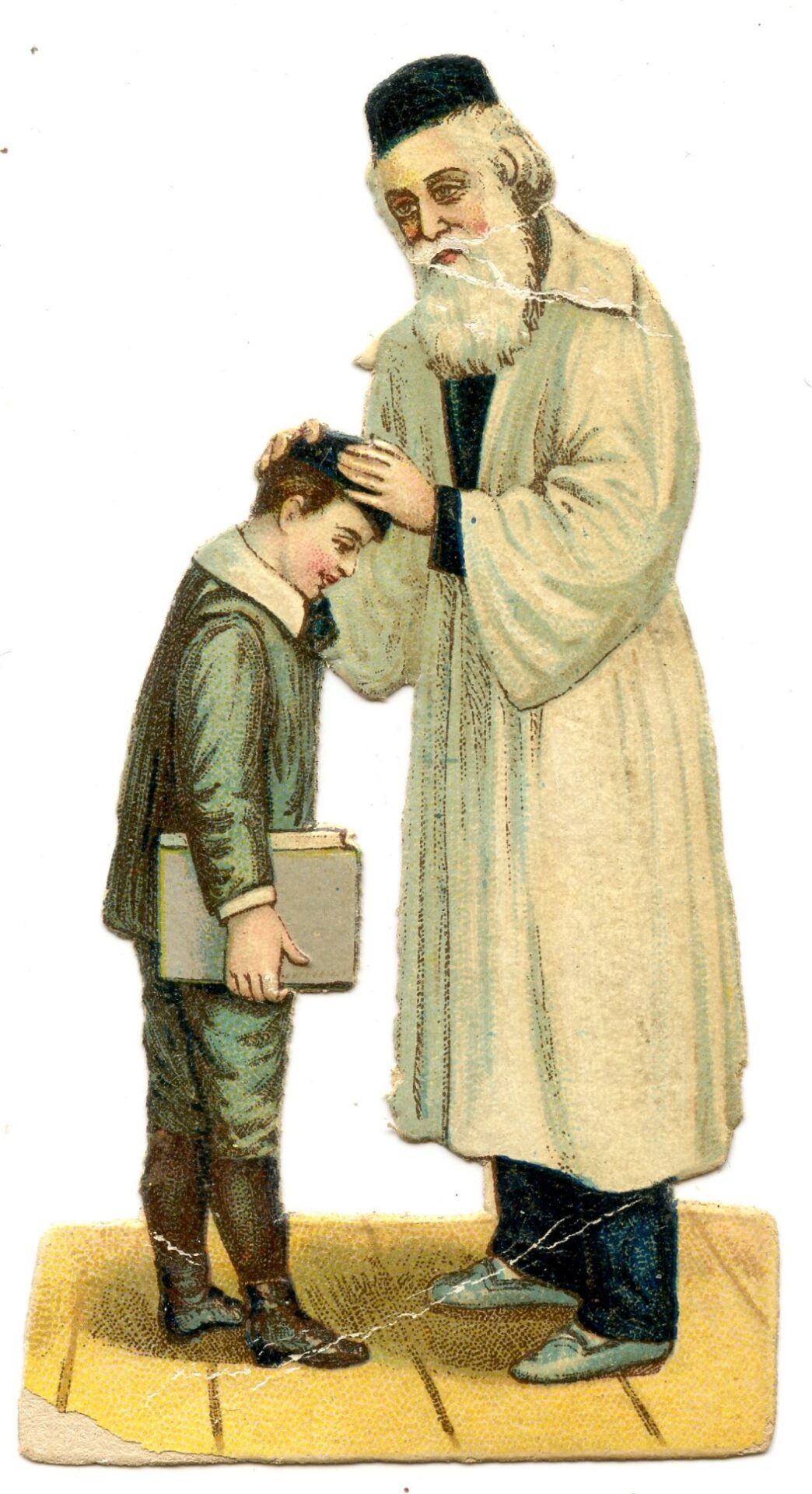Dombornyomott és csillogó „hagyományos” zsidók
A különböző regények, tárgygyűjtemények és festmények a 19. század utolsó harmadában a rurális zsidó családi életét őseredetiségét hangsúlyozták az iparosodás és modernizáció kezdetén. A városi életmódból visszatekintve a szerzők, festők és gyűjtők megalkották azt a zsidó kulturális miliőt, amelyet az általuk vagy szüleik által elhagyott „gettóvilággal” azonosítottak. Az újra-megbékélés a „gettóval” számtalan formát öltött, és széles társadalmi bázison nyugodott. A dombornyomott papírkivágások (Glanzbildchen) polgári emlékkönyvek dekorációi lettek. A szentírási témák mellett megjelentek a rurális zsidó családi és vallási élet ábrázolásai is.
Embossed and glittering images of “traditional" Jews
In the last third of the 19th century, various novels, collections and paintings emphasised the archaic nature of rural Jewish family life at the beginning of industrialisation and modernisation. Looking back from an urban lifestyle, authors, painters and collectors created a Jewish cultural milieu that they identified with the ‘ghetto world’ they or their parents had abandoned. Reconciliation with the ‘ghetto’ took many forms and had a broad social base. Embossed paper cut-outs (Glanzbildchen) became decorations for civic memorial books. Alongside the scriptural themes, there were also depictions of rural Jewish family and religious life.

Nagyszülő áldását megörökítő papírkivágás, gyermekjáték.
„Glanzbild” of a grandparent’s blessing, paper scrap
© Glässer Norbert